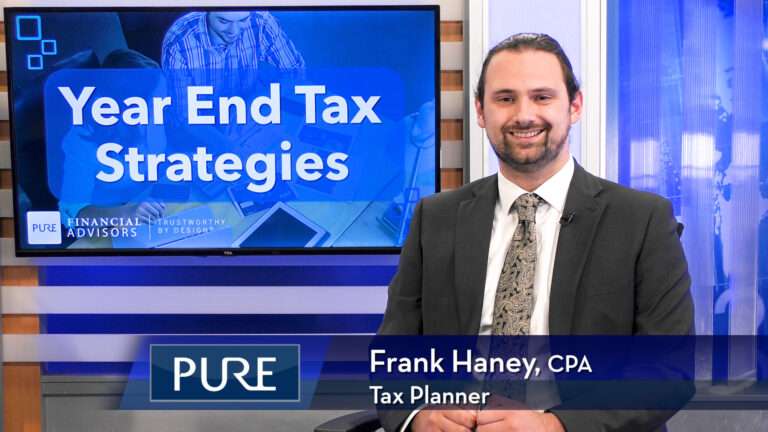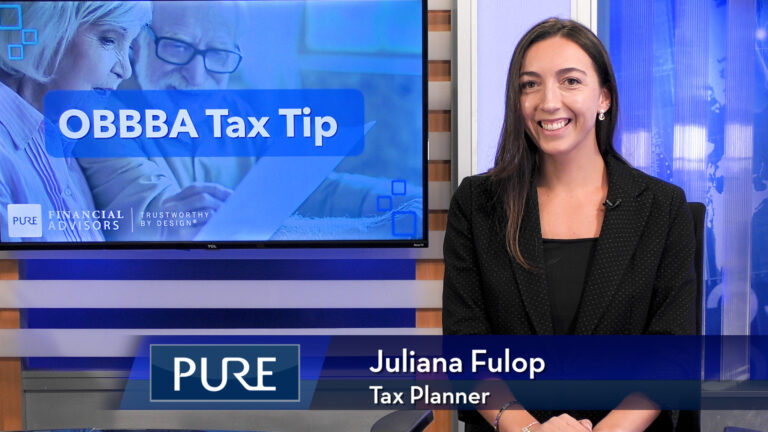The Roth IRA and a Roth 401(k) both provide tax-free portfolio growth for life, but what are the differences between these two retirement savings accounts? In this video, Senior Financial Planner Matt Horsley, CFP® outlines how Roth plans differ from pre-tax accounts, how each fits into your retirement investing strategy, the 2020 contribution limits for each plan, and more.
Transcript:
Today we’re going to talk about Roth IRAs and Roth 401(k) plans. But before we get into that, I think it’s important to understand the difference between Roth IRAs and 401(k) plans, and their sisters, which are the pre-tax IRAs and pre-tax 401(k) plans. So let’s focus on those first.
With a pre-tax IRA and pre-tax 401(k) plan, the way those work is you contribute money on a pre-tax basis into the accounts, and then your funds grow tax-deferred until some point in the future when you want to start pulling the money out. So basically it works like this: let’s say if I contribute $10,000 to my 401(k) plan through work, I’m going to get a $10,000 deduction on my income; on my income tax returns. So that’s going to save me money in tax today, which allows me to save a little bit more today because I’m getting that tax deduction. The money grows in the future.
At retirement, at some point you’re likely going to have other income sources, probably Social Security, possibly a pension. Those income sources are taxed as ordinary income as if you were still earning that money. If you have the bulk of your money in a pre-tax IRA and pre-tax 401(k) plan and you need to produce cash flow from those accounts as well, that’s all also taxed as ordinary income. The point is, if all of your income stream, your cash flow, is coming from those types of sources, it may very well blow you up into higher tax brackets in retirement. The whole idea of saving in these pre-tax accounts is that I might be a lower tax bracket in retirement than today. For many of us it’s going to be the opposite. We know that with the Tax Cuts and Jobs Act, all of those provisions from a tax standpoint, the tax brackets are going to sunset in 2025, and across the board tax brackets are going up.
As opposed to that, now we have a Roth IRA and Roth 401(k) plan, and they basically work, like, almost the opposite. So with a Roth IRA and 401(k) plan you don’t get that immediate tax deduction of your funds going into the accounts. However, once the funds are there, they grow tax-free for the rest of your life. Let me repeat that the money grows tax-free for the rest of your life. So think about it this way: now I get to retirement, I’ve got some money in my pre-tax 401(k) plans and IRAs. I have Social Security, maybe a pension coming in. I also have this pool of assets in my Roth IRA and Roth 401(k) plan that I can draw from tax-free. Possibly, I also have money invested in a brokerage account or real estate or things that are taxed at capital gains tax rates.
The idea is this; you want to do some planning today to look at your tax brackets today and say, “you know what? There is a good potential at some point the future I might be in the same tax brackets or higher tax brackets than I am in today. So with a Roth 401(k) Roth IRA, that creates that additional pool of income you can produce on a tax-free basis to keep yourself in the very lowest tax brackets, not just today, but for the rest of your life.
Let’s talk about the contribution limits. This applies to both pre-tax IRAs and 401(k) plans, and to Roth IRAs. In the year 2020, you can contribute up to $6,000 to your Roth IRA. If you’re over age 50, you can contribute another $1,000 for a catch-up provisions for a total of $7,000.
In your Roth 401(k) plan, the maximum is $19,500, and if you’re over age 50, you can contribute another $6,500 for a total of $27,000. So between those two, you can contribute each year a maximum of $33,000 to your Roth IRA and Roth 401(k) plans. That gives you a great start if you’ve been saving pre-tax into these pre-tax 401(k)s and IRAs for a long time, to get money saved into a tax-free account.
Bottom line is we know that with pre-tax IRAs and 401(k) plans, with the passage of the SECURE Act, at age 72 whether you need that income or not from the accounts, the IRS is going to require that you start pulling money out – whether you need the income or not, again, potentially blowing you up into a higher tax bracket. With your Roth IRAs, that money can grow tax-free for the rest of your life. You’re not required to pull any money out if you don’t need it. With a Roth 401(k) plan, there are required distributions, but likely you would simply roll the 401(k) plan into your Roth IRA, allowing that money to grow tax-free. And then if you don’t need it for yourself or for your spouse, the very best way to leave money to the next generation is in tax-free accounts like Roth IRAs.
So what I encourage everyone to do is to sit down and take a look at your tax brackets today and determine, “might I be in similar tax brackets are higher tax brackets in retirement?” Then it likely makes sense to look at tax-free Roth IRAs and 401(k) plans versus pre-tax accounts.
Hope this helps, if you have any questions, please give us a call.
Make sure to subscribe to our channel for more helpful tips.













